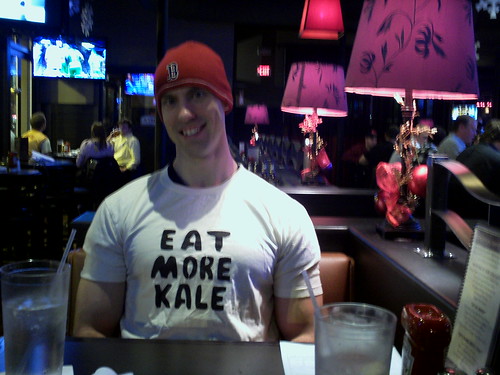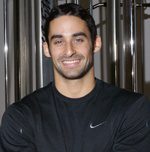I don’t care if you’re a personal trainer who just started working at the local Gold’s Gym last week, or a seasoned veteran who’s been training people for the past 10-15 years, it’s inevitable that you’re going to be working with the walking wounded at some point in your career.
Everyone you work with is injured to some degree. While some may walk in on day one with an already pre-existing condition – like an ACL injury or AC joint issue – others may walk in completely asymptomatic and be pain free, yet if you were to take an MRI of their spine, it could very well resemble something coming out of a meat grinder.
Nevertheless, having the ability to work around various injuries and not only help “fix” people but still elicit a training effect in a safe and timely manner, is an invaluable skill for any trainer or coach to possess.
Furthering the point above, those trainers who go out of their way to better themselves and learn to develop a bit more of a corrective exercise background, are the one’s that tend to separate themselves from the masses.
Which brings us to my good friend, Dean Somerset. Dean just released his latest product, Post Rehab Essentials, which is designed for trainers looking to increase their knowledge of how to work with various injuries in a gym-based or studio setting. Truth be told, there’s a rather large knowledge gap between those who know a whole lot about every aspect of training and those who are looking to get a strong foothold and take a step up from average.
Dean was kind enough to send me an advance copy a few weeks ago and all I have to say is that after viewing it, I wish I could just hop onto Craigslist, do a search for “Flux Capacitor,” and then go back in time for the sole purpose of scissor kicking myself in the face for relying too heavily on what my text books told me.
Suffice it to say, it would have saved me A LOT of time if I had resources like this back then.
To that end, Dean was nice enough to sit down and answer a few questions regarding the fitness industry as well as discuss Post Rehab Essentials.
And, because I know some people won’t even bother to read the interview (tsk, tsk, tsk), here are some important things to consider:
1. Dean breaks this down into four sections: Introduction, Upper Extremity, Lower Extremity, and the Spine. He not only discusses some basic anatomy, but also covers assessment as well as programming variables. It’s pretty much one of the most baller products out there geared towards rookie and intermediate trainers.
2. I think it’s an awesome product that will help a lot of trainers out there become better at what they do. This undoubtedly gets the Tony G seal of approval.
3. Post Rehab Essentials is on sale only from now until Friday (12/9). After that, the price increase $60, so be sure to take advantage of the savings while you can.
Okay, I’ll let Dean take over from here.
TG: Dean, lets cut the formalities, most of the people reading this know who you are, because we’re always creepin on each other’s blogs. For those who don’t, here’s a quick primer:
Dean’s a personal trainer and exercise physiologist who specializes in post-rehab programming, and being really smart. He likes walks on the beach, and, much like me, has an affinity for obscure Jedi references. Heck, we’re practically the same person – except he likes hockey, and I’m way better looking.
Anyways, Dean, tell us a little bit about the driving force behind Post Rehab Essentials.
DS: The whole program came about when I had 32 medical professionals referring me business a few years ago, and wound up at a point where I literally couldn’t take on any more business without training 4 or 5 people at once, and that was something the insurance providers and the referring professionals got pissed about.
As a result, I began to look for other trainers to off-load some clients in order to keep business flowing, but I wanted to make sure they had the right skillset to work with these people. No sit and reach testing or max rep pushups here, I wanted to have people who could look at a client and determine why their rotator cuff was getting all beat to hell.
As I’m sure you can attest, these kinds of trainers are few and far between, so I had to build a program that would cover the basics to up the games of those who would be working for me, coving all the major injuries you would see in a gym setting: rotator cuff tears, ACL reconstructions, disc herniations, and a few dozen others.
Once I began teaching the trainers what to do and what to look for, they also wanted to have some pre-made programs they could use with their clients (and even themselves) to help get the ball rolling. This was an idea that also piqued interest with a few doctors and insurance providers, so having the standardized plans in place helped actually build more business. Plus, it meant if a client came in with a rotator cuff issue, I could hand them to anyone and they would get a safe program that would help them out.
TG: That’s awesome, and just goes to show how establishing a solid network of other fitness professionals can be a powerful thing.
Would you agree that the gap between the personal training side of things and physical therapy side of things is closing? In my opinion the gap is smaller than we think, but it’s a dangerous line to walk because we now have plenty of personal trainers out there thinking they’re capable of diagnosing things because they read a book or two on the topic. What are your thoughts?
DS: I totally agree that the gap is getting smaller, but I need to preface that a little more. The gap is getting smaller AT THE TOP of the fitness industry, and seems to be getting wider at the bottom, where the entry-level certifications are pumping out trainers with little to no experience with injuries whatsoever.
As a result, I’ve seen trainers telling clients with some obvious structural issues to “push through it” when performing overhead press and weighted crunches. Serious spin kicks needed in those situations.
At the same time, you’re absolutely right when trainers feel they can diagnose after reading Sahrmann or McGill for a weekend. The funny thing is that I’ve specialized in injury post-rehab for the better part of a decade, worked with dozens of doctors, physios and chiropractors in their clinics, observed multiple surgeries, and had my training programs picked over by some of the best minds in rehab, and I don’t even diagnose.
Sure, I can tell a lot about someone by looking at them, but there are some really specific red flags that I look for to see if going to keep training with me or go back for more treatment. I may know in the back of my mind that the person in front of me is presenting with all the right symptoms for a specific diagnosis, but I want to make sure I’m right before I decide on anything, otherwise my wrong move may wind up causing some big issues. I always want to have two sets of eyes looking at a client to make sure, and every other trainer should do the same.
TG: What do you feel are the key components for success in this industry? More to the point, what can incoming (and current) trainers do to better set themselves up for long-term success.
The biggest advice I could get for any trainer is simple: Get better results for your clients, and get better results for more clients. Knowing how to help a client lose 5 pounds is great, but if you can help them lose 50 pounds, they’ll pay closer attention. Likewise, if you can help them lose 50 pounds, increase their strength, make their back not hurt anymore, and reduce their odds of having a total knee replacement (or helping them do all this after they’ve had a knee replacement) can make or break your ability to have someone open their wallet to get you to help them. The more problems you solve, and the better you solve them, the more in demand you will become.
The next piece is to make yourself a specialist in SOMETHING. I hd a client a few years ago who was a young lawyer, and he was all excited when he got his first actual business card, which read on the back “Specializing in marital law, business law, tax law, criminal defence, civil rights, andreal estate.” This means he didn’t specialize in anything at all.
He was a generalist. You shouldn’t be a generalist, because when someone needs something really bad, they want the best at what they do. They’re going to come to you, because you are the best at what you do (hopefully). Whether it’s preparing for a figure contest, getting baseball players ready to throw heat, or helping someone fix their wonky knees, make it your goal to have something account for 80% of your business.
TG: Great insight, Dean. I couldn’t agree more. And lastly, if you could, can you give my readers the 5 minute elevator pitch – or in this case, the 500 word pitch – as to what Post Rehab Essentials brings to the table? Basically, how will this make trainers more awesome?
DS: Knowledge is power, and this is never more resonant than in fitness.
The trainers who spend the most time learning from as many different sources as possible tend to make the most money, and tend to have the best reputations as fitness professionals. I’m also a big believer in quality, usable content that you don’t have to have a PhD in biomechanics to understand, so I made this product cut to the chase, show why specific injuries happen, how to assess for them, and what to do with the info you get from your assessments.
This is a quick reference guide to help you solve more of your clients problems than ever before, which makes you a better trainer at the end of the day, and as a result make more money and have a greater impact on the quality of your clients lives.
If that’s not enough, consider this: more than one third of asymptomatic people walking the streets would show a partial or full thickness rotator cuff tear on MRI, especially if they’re over 60. More than half of those asymptomatic people also had disc bulges, some at more than one level. What this means is that whether you want to work with injured clients or not, you already are, so not knowing what to do about it will be the fastest way to put yourself out of business.
If that’s not enough, I’m also going to show you a thousand different ways to make your workouts better, more effective, and way more pimp than you ever thought possible.
TG: Awesome stuff Dean. Thanks for your time!
====> Post Rehab Essentials <====






